Birdbaths serve as more than mere garden decorations—they provide essential hydration and grooming stations for our feathered friends while creating magical birdwatching opportunities for human observers. Selecting the right birdbath might seem straightforward, but the decision impacts everything from bird health and safety to the diversity of species that will visit your yard. For bird enthusiasts, a well-chosen birdbath becomes a vibrant hub of avian activity, offering intimate glimpses into natural behaviors rarely observed elsewhere. Whether you’re a seasoned ornithologist or simply someone who enjoys watching birds from your window, understanding the nuances of birdbath selection reveals how deeply these simple water features contribute to bird welfare and conservation efforts.
The Vital Role of Water in Bird Ecology
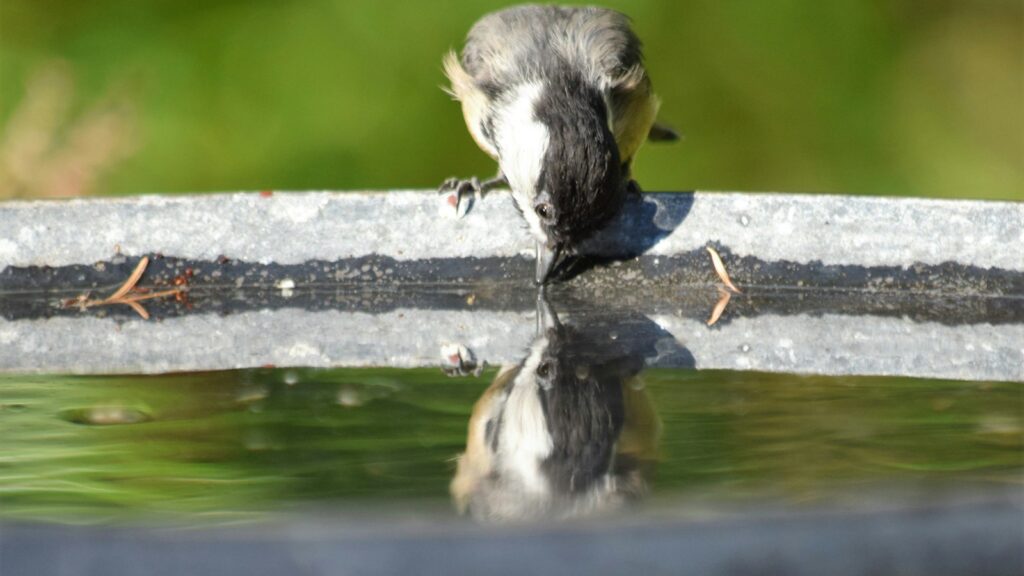
Water serves multiple critical functions in a bird’s daily life beyond simple hydration. Birds use water for drinking, bathing to maintain feather condition, cooling off during hot weather, and removing parasites that could otherwise compromise their health. Unlike mammals, birds don’t have sweat glands, making external water sources essential for temperature regulation, especially during summer months. Regular bathing helps birds maintain the insulating properties of their feathers, which is crucial for flight efficiency and staying warm during colder seasons. By providing a reliable water source, birdbaths support these fundamental biological needs while creating crucial stopping points for migrating species traveling through developed areas where natural water sources may be scarce.
Choosing the Right Birdbath Depth
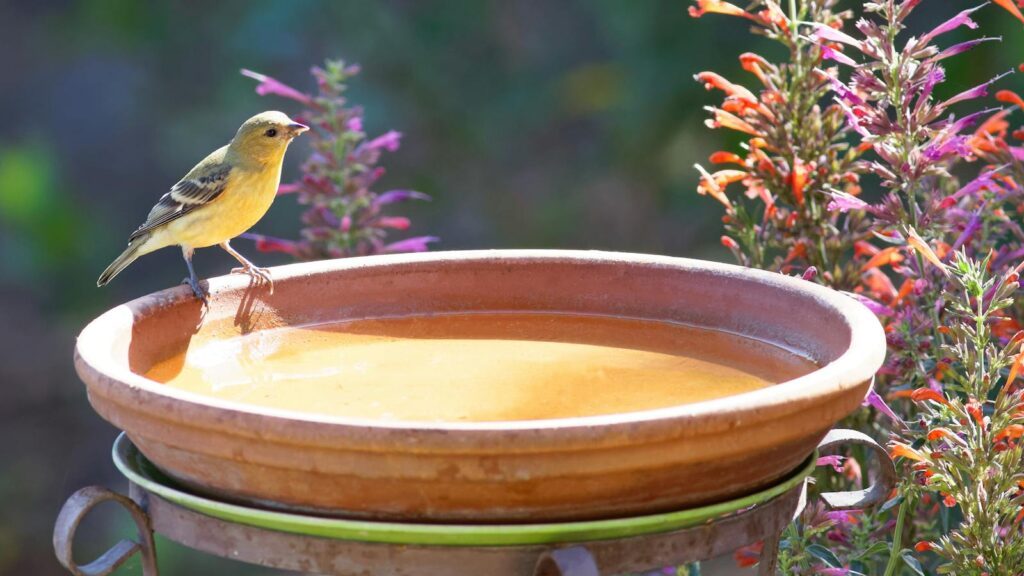
The depth of your birdbath directly influences which species will use it and how safely they can do so. Most songbirds prefer shallow baths ranging from 1 to 2 inches at the deepest point, with gradually sloping sides that create varying depths. Deeper basins can actually deter smaller birds who risk drowning if they can’t touch the bottom while bathing. Creating a “beach entry” effect with pebbles or stones arranged to create a gradual slope into the water helps accommodate birds of different sizes and bathing preferences. For larger birds like jays and robins, slightly deeper sections up to 3 inches may be appreciated, but always ensure there’s a shallow area where smaller visitors can safely splash and preen.
Material Matters: From Concrete to Ceramic
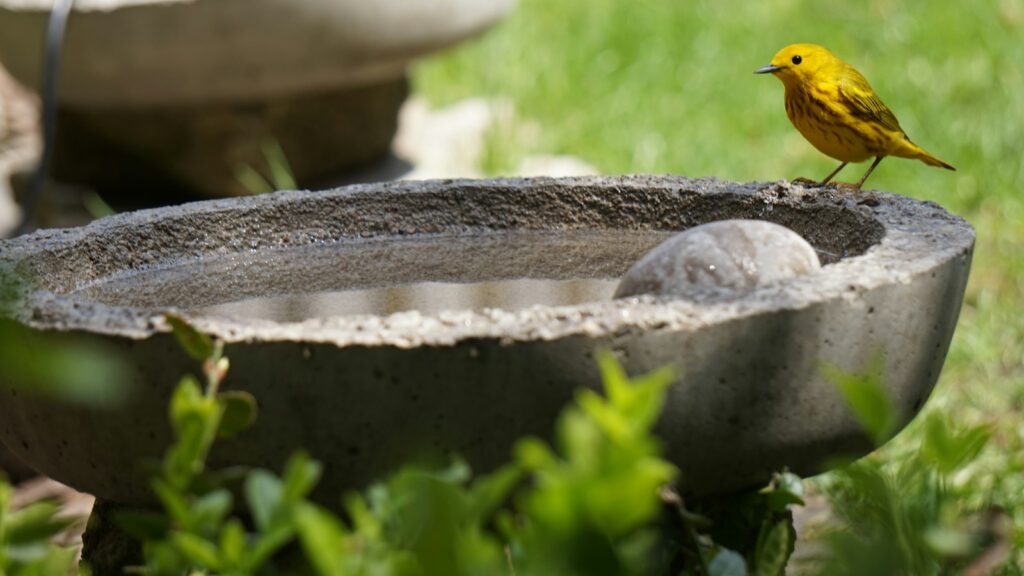
Birdbath materials significantly impact durability, maintenance requirements, and even bird safety. Concrete birdbaths offer exceptional stability and longevity but can be difficult to clean and may crack in freezing temperatures if not properly winterized. Ceramic and glazed options provide elegant aesthetics and smooth surfaces that are easier to clean, though they typically require more protection from freezing weather. Plastic and resin birdbaths offer affordability and lightweight handling but may need to be weighted down to prevent tipping in windy conditions. Metal basins, while attractive, can heat up dangerously in direct sunlight, potentially scalding birds—these should only be used in shaded locations. Regardless of material choice, textured surfaces provide better footing for bathing birds compared to slippery, completely smooth interiors.
Location Strategies for Maximum Bird Visibility and Safety
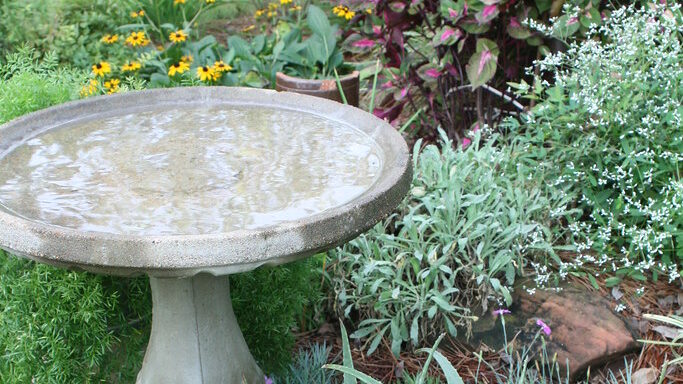
The placement of your birdbath critically affects both bird usage and your viewing pleasure. Position the bath where birds have a clear sight line to spot approaching predators, ideally 5-10 feet from protective shrubs or trees that provide quick escape routes without completely concealing the bath. Avoid placing birdbaths directly under feeders where droppings and seed husks can contaminate the water, requiring more frequent cleaning. For optimal bird comfort, locate your bath in a spot that receives morning sun but afternoon shade, preventing water from becoming uncomfortably hot during peak daytime temperatures. Consider installing your birdbath within viewing distance of a window or patio where you regularly spend time, allowing for impromptu birdwatching sessions throughout the day.
The Critical Importance of Regular Cleaning
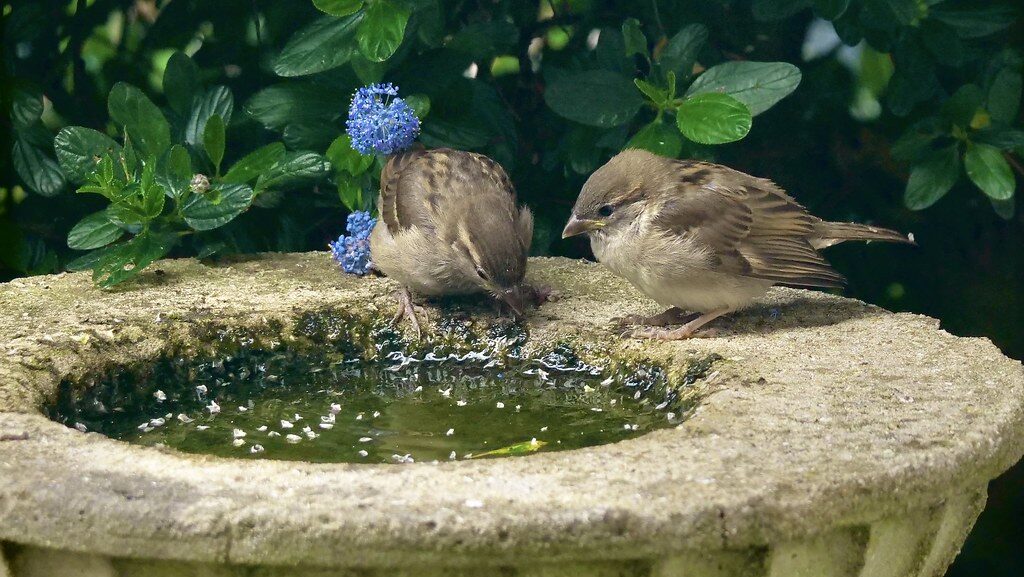
A clean birdbath isn’t just aesthetically pleasing—it’s essential for bird health and continued visitation. Stagnant water quickly becomes a breeding ground for harmful bacteria, mosquitoes, and parasites that can spread diseases among your avian visitors. Most bird experts recommend completely emptying and scrubbing your birdbath every 2-3 days during warm weather and weekly during cooler months. Use a stiff brush with a mixture of nine parts water to one part vinegar for natural cleaning, avoiding harsh chemicals that might harm birds or deteriorate the bath surface. During cleaning, pay special attention to any biofilm—the slick, often greenish coating that develops on underwater surfaces—as this harbors harmful microorganisms that can cause avian diseases. Installing a water agitator or small fountain can help keep water moving between cleanings, reducing the rate of bacterial growth.
Moving Water Features: Attracting More Species
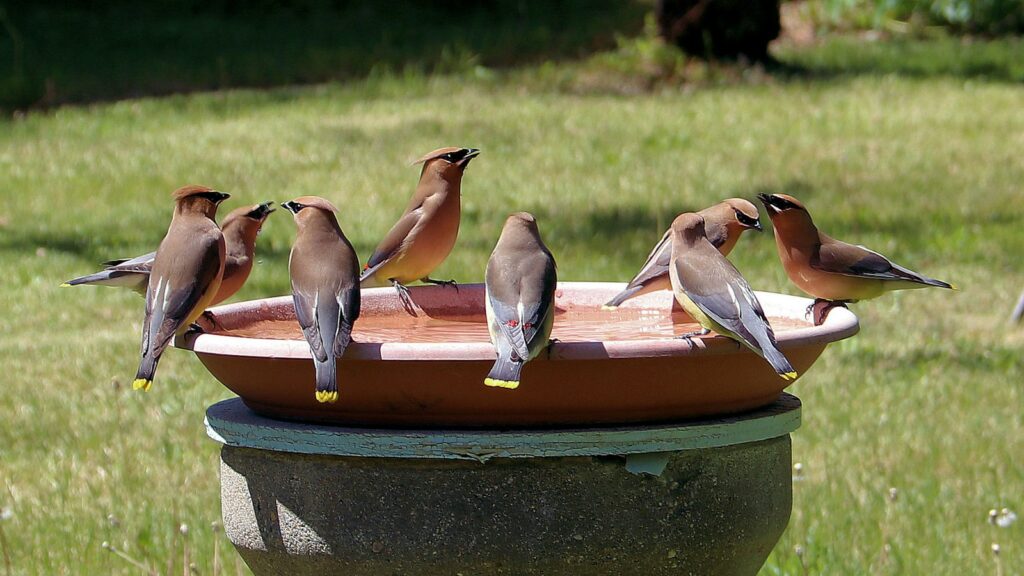
Birds are instinctively drawn to the sound and sight of moving water, making it one of the most powerful attractants for species that might otherwise ignore a still birdbath. The gentle splashing or trickling sounds mimic natural water sources and can be heard by birds from surprisingly long distances, drawing in species you might never see at traditional feeders. Solar-powered fountains offer an eco-friendly option for creating movement without complicated wiring or increasing utility bills. Even simple accessories like water wigglers or drip systems can transform a standard bath into a dynamic feature that particularly appeals to warblers, thrushes, and other insect-eating birds that rarely visit seed feeders. Beyond attraction benefits, moving water significantly reduces mosquito breeding, as the insects require still water to complete their life cycle.
Winter Considerations for Four-Season Birdbaths
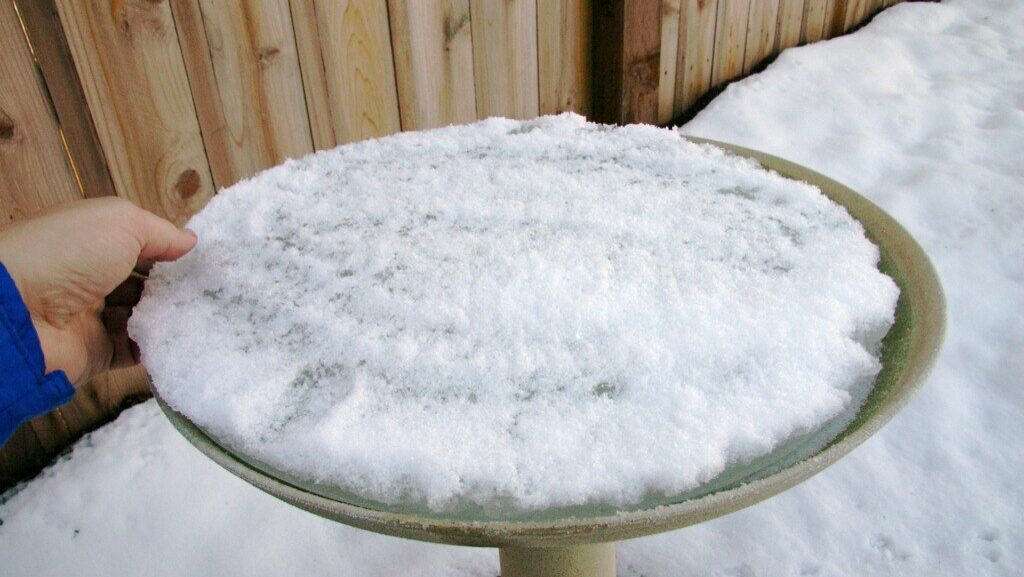
Providing water during winter months can be particularly valuable to birds when natural sources freeze over, potentially attracting species you wouldn’t normally see in your yard. Heated birdbaths maintain water temperatures just above freezing, preventing ice formation without becoming uncomfortably warm for birds. If using an electric heater, ensure all connections are properly protected from the elements with outdoor-rated equipment and GFCI outlets for safety. During extreme cold snaps, shallow baths may need to be emptied nightly and refilled in the morning to prevent damage to the basin from expanding ice. Some bird enthusiasts use dark-colored basins in sunny locations during winter, as these absorb more solar heat and may stay ice-free longer during daylight hours.
Budget-Friendly DIY Birdbath Options
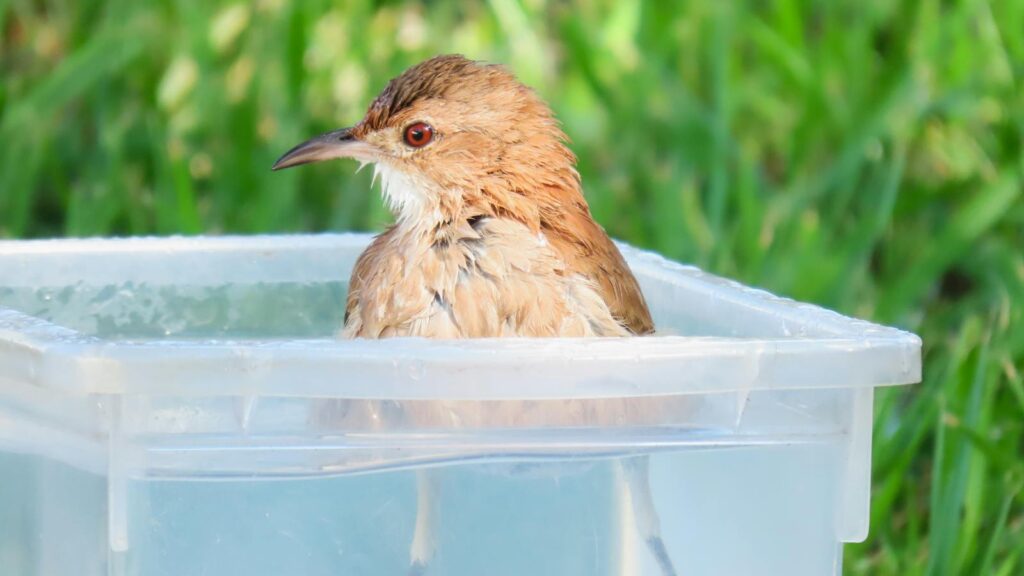
Creating your own birdbath doesn’t require elaborate materials or advanced crafting skills, making it an accessible project for bird lovers on any budget. Repurposed items like large plant saucers, shallow baking pans, or even inverted trash can lids can make perfectly functional baths when secured on stable bases like stacked rocks or an upturned flowerpot. For a more permanent solution, concrete birdbaths can be made at home using simple molds from items like large leaves or plastic containers, with embedded stones or glass pieces adding artistic elements and improved footing for birds. Adding a homemade dripper using a recycled plastic container with a tiny hole suspended above the bath creates the attractive moving water birds love without purchasing specialized equipment. Remember that regardless of construction method, all homemade baths should incorporate the same design principles as commercial options: shallow depth, textured surfaces, and stable positioning.
Multiple Birdbaths: Creating a Bird Sanctuary
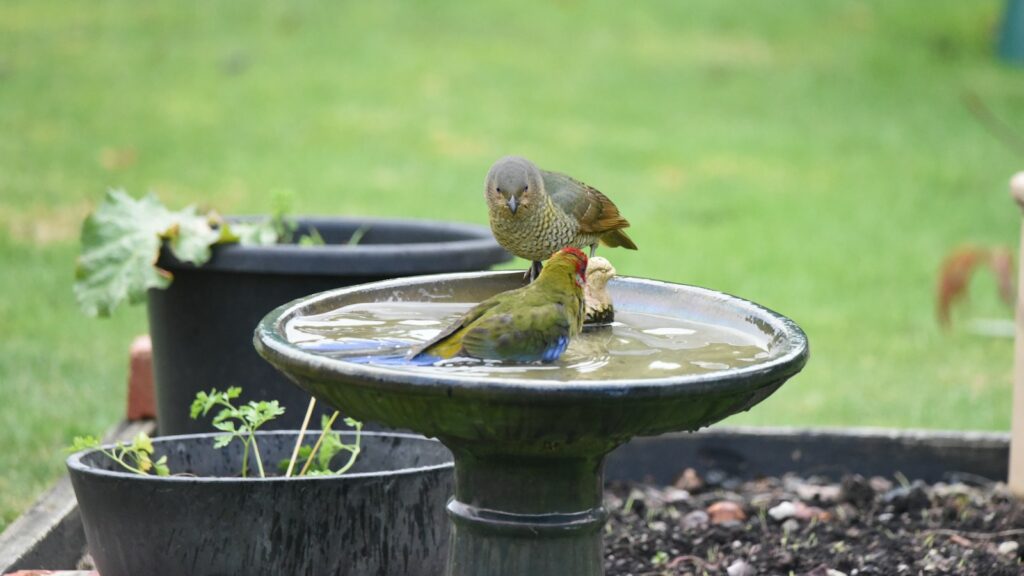
Installing several birdbaths at different heights and locations throughout your yard significantly increases avian diversity by accommodating the preferences of various species. Ground-dwelling birds like sparrows and thrushes typically prefer lower baths, while elevated models attract canopy-dwelling species such as warblers and tanagers. Multiple baths help reduce territorial conflicts that can occur when numerous birds attempt to use a single water source, especially during migration seasons when visitor numbers may suddenly increase. Consider creating a “bathing circuit” by positioning baths near different habitat features—one near dense shrubs for shy species, another in a more open area for confident birds, and perhaps a third with moving water for species particularly attracted to that feature. With multiple water sources available, birds can establish comfortable patterns and hierarchies that allow more peaceful coexistence.
Predator-Proofing Your Birdbath
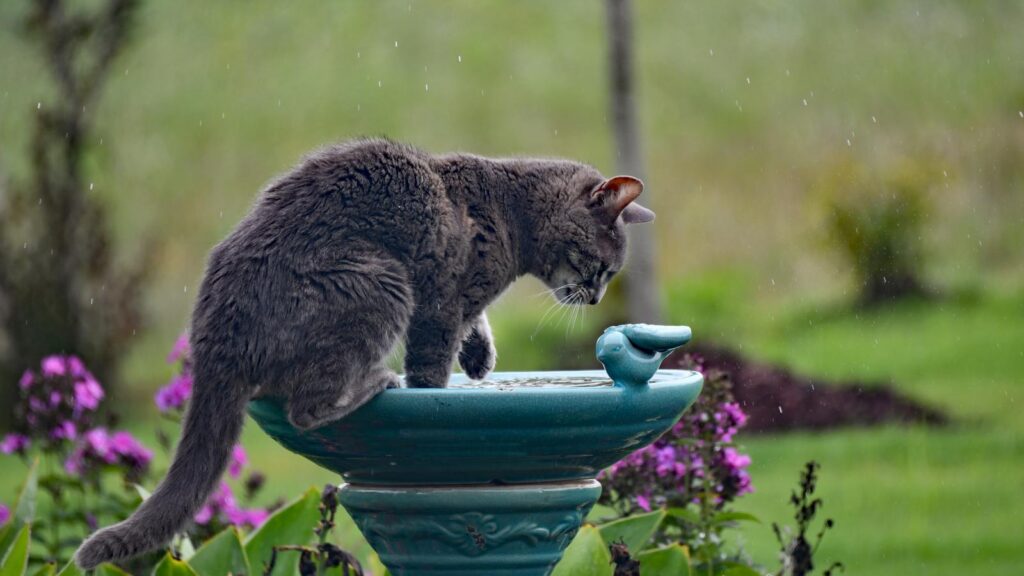
While providing water for birds, it’s important to avoid inadvertently creating a hunting ground for predators. Position birdbaths at least 10-15 feet away from dense ground cover where cats might hide, while still maintaining proximity to trees or shrubs that offer quick escape routes for bathing birds. Consider installing a protective dome or cage around ground-level baths to prevent ambush attacks while still allowing birds access to the water. If neighborhood cats are a particular concern, elevated baths mounted on poles with predator guards (similar to those used for birdhouses) offer better protection than ground or pedestal models. Always avoid placing birdbaths near bird feeders, as the concentration of birds in one area creates an attractive hunting opportunity for predators and increases the risk of disease transmission among birds.
Seasonal Adjustments for Optimal Bird Support

Adapting your birdbath management throughout the year enhances its effectiveness and bird appeal during changing conditions. During spring migration and nesting season, maintaining scrupulously clean water becomes even more critical as birds gather nesting materials and feed young with heightened susceptibility to disease. Summer heat waves call for more frequent water refreshing—sometimes twice daily—and possibly deeper water levels to offset evaporation while maintaining safe bathing depths. Fall migration brings opportunities to support traveling birds by ensuring consistent water availability as these visitors may be unfamiliar with local natural water sources. Winter adjustments include using darker-colored basins that absorb more solar heat, adding heating elements in freezing climates, and positioning the bath in locations that receive maximum sunlight while being protected from harsh winds that accelerate heat loss and evaporation.
The Conservation Impact of Your Backyard Birdbath
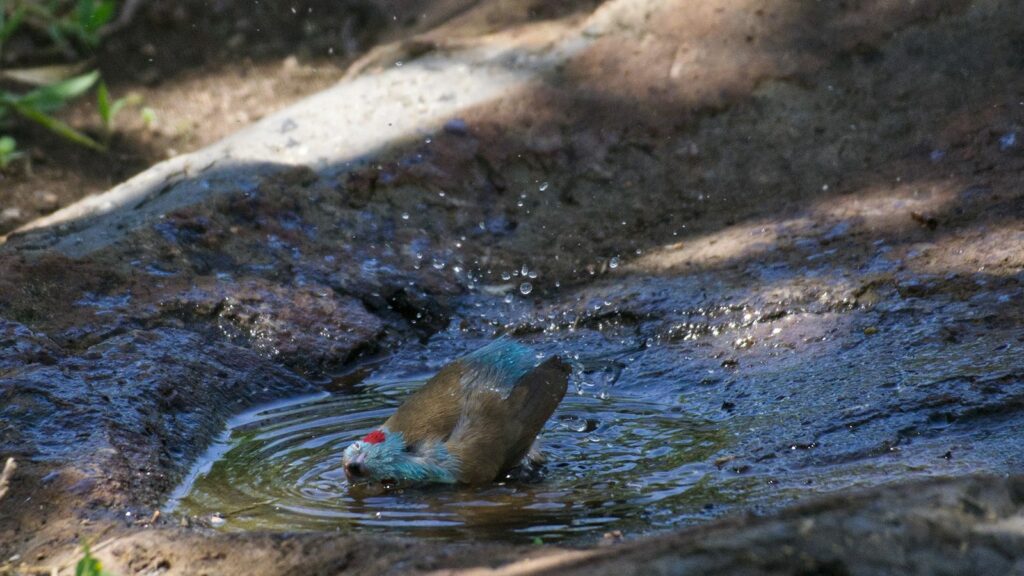
Your simple birdbath represents a meaningful contribution to bird conservation, especially in urban and suburban environments where development has eliminated many natural water sources. During periods of drought, maintained birdbaths provide critical hydration that can influence survival rates for resident bird populations and support migrants passing through affected regions. By creating reliable water sources across neighborhoods, individual homeowners collectively establish hydration corridors that help birds navigate developed landscapes more successfully. Research indicates that properties with water features support greater bird diversity than those with feeders alone, suggesting that birdbaths play a distinct ecological role that complements other backyard habitat elements. Additionally, the observations you make at your birdbath—noting species, behaviors, and population changes—can contribute valuable citizen science data to ornithological research when shared through programs like eBird or Project FeederWatch.
Birdwatching Opportunities: Getting the Most from Your Investment
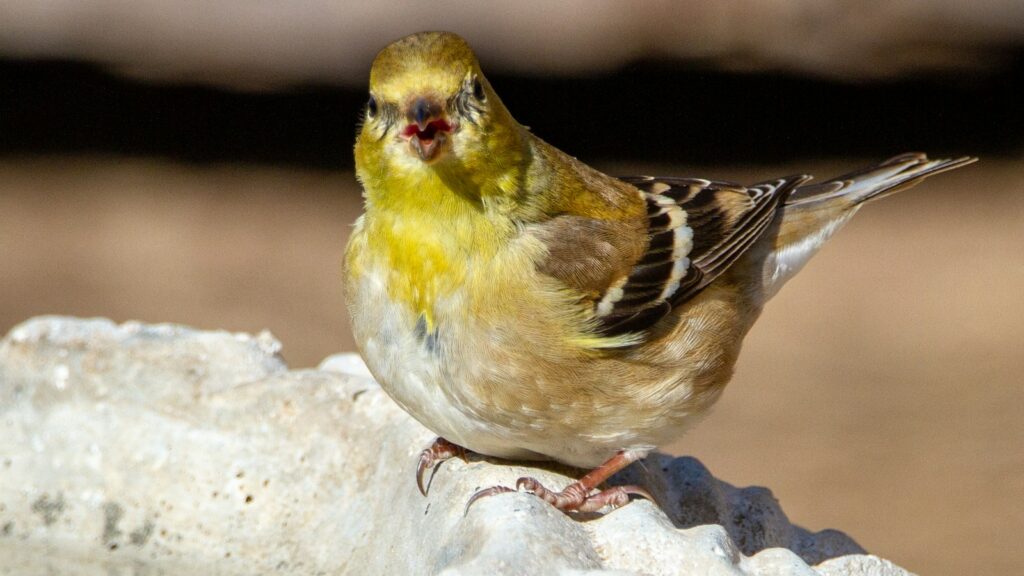
A well-positioned birdbath creates unparalleled wildlife viewing opportunities right from your window, offering intimate glimpses into avian behavior often missed at feeders. Unlike feeding stations where birds typically grab seeds and retreat, birdbaths encourage extended visits as birds thoroughly bathe, preen, and socialize, displaying fascinating natural behaviors. Consider maintaining a bath journal documenting first-time species visitors, unusual bathing techniques, and seasonal patterns that emerge over time. Photography enthusiasts can set up camouflaged viewing blinds or remote cameras to capture extraordinary moments without disturbing the birds’ natural behaviors. For family education, birdbaths provide accessible nature observation opportunities for children, helping develop patience, observation skills, and appreciation for wildlife that can inspire lifelong conservation values.
Conclusion
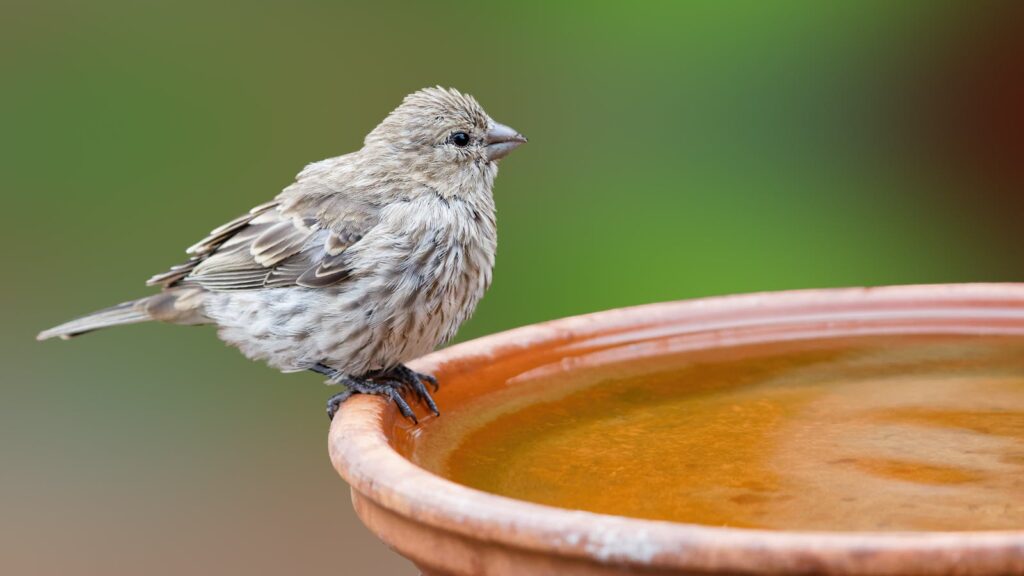
The humble birdbath, when thoughtfully selected and maintained, transforms from a simple garden ornament into a powerful tool for bird conservation and enjoyment. By considering factors like depth, material, location, and seasonal adjustments, bird enthusiasts create more than just a water source—they establish microhabitats that support avian health and diversity while opening windows into the fascinating world of bird behavior. Whether you choose an elaborate fountain or a simple homemade dish, your commitment to providing clean, accessible water makes a meaningful difference in your local ecosystem. As climate change intensifies and development continues to reduce natural habitats, the significance of these backyard oases only grows, making your birdbath choices an increasingly important act of environmental stewardship that connects you directly to the natural world outside your door.
